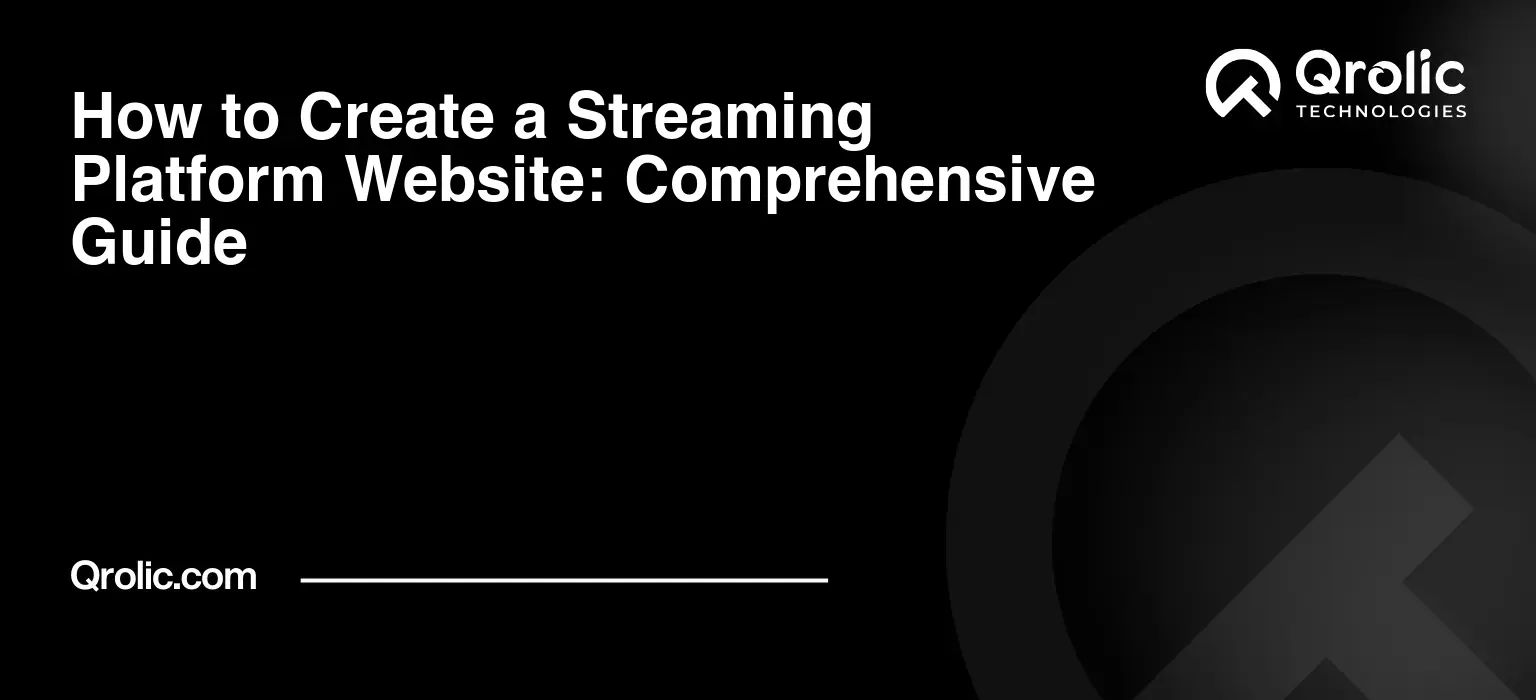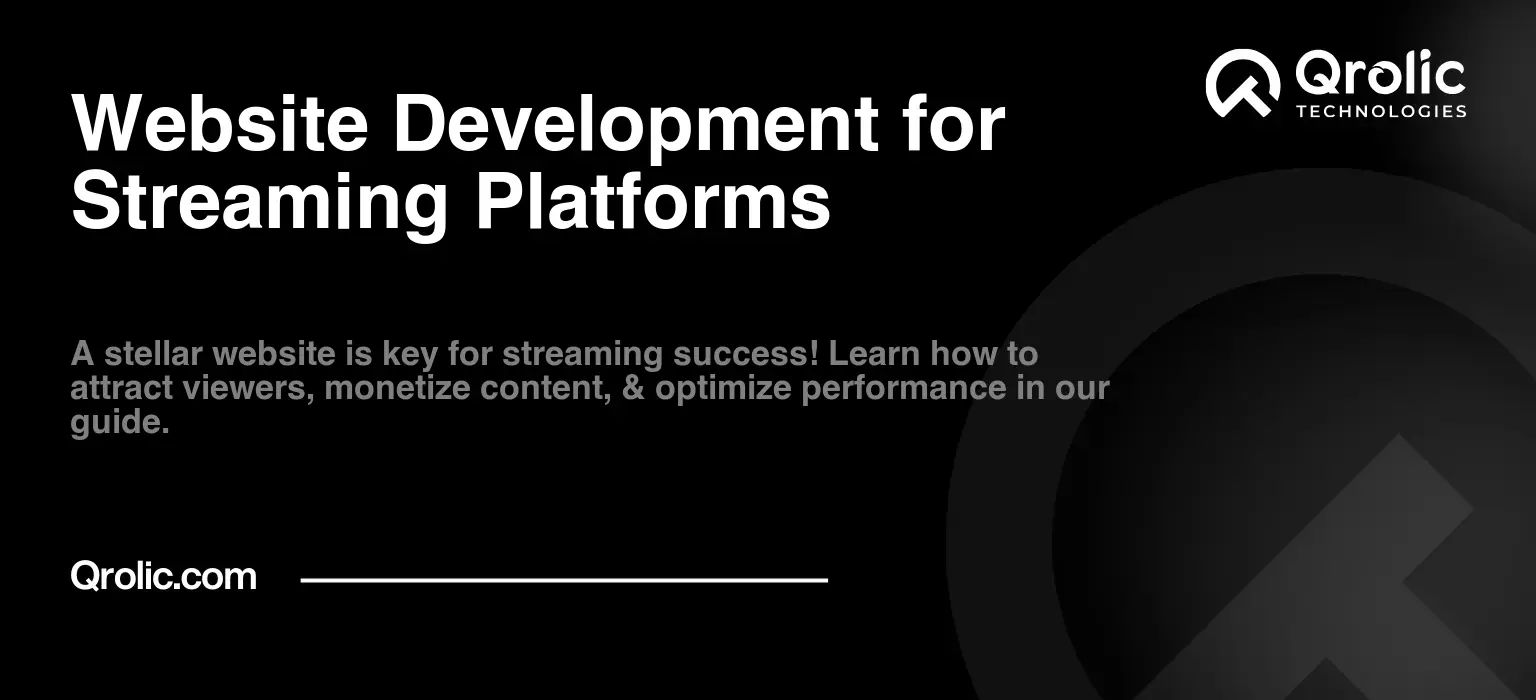Quick Summary:
- Plan your niche, content, and how you’ll make money.
- Decide: build your platform or use a ready-made one.
- Focus on great design, content delivery, and marketing.
- Use data and analytics to continuously improve.
Table of Contents
- Understanding the Landscape: Why Launch Your Own Streaming Platform?
- The Power of Niche Audiences
- Monetization Opportunities Beyond Subscriptions
- Direct Control Over Your Content and Brand
- Building a Streaming Platform vs. Using Existing Services
- Planning Your Streaming Platform: Laying the Foundation for Success
- Defining Your Target Audience
- Developing a Content Strategy
- Choosing a Monetization Model
- Legal Considerations: Rights, Licenses, and Compliance
- Technical Foundations: Building Your Streaming Platform
- Option 1: Building from Scratch
- Option 2: Using a Platform-as-a-Service (PaaS) Solution
- Choosing the Right Option: A Decision Matrix
- Video Platform Design: Creating an Engaging User Experience
- Key Design Principles
- Essential Design Elements
- Best Practices for Video Platform Design
- Content Management and Delivery: Optimizing the Streaming Experience
- Video Encoding and Transcoding
- Content Delivery Network (CDN)
- Metadata Management
- Marketing and Promotion: Getting the Word Out
- Search Engine Optimization (SEO)
- Social Media Marketing
- Email Marketing
- Paid Advertising
- Content Marketing
- Analytics and Optimization: Measuring Success and Improving Performance
- Key Metrics to Track
- Tools for Tracking Analytics
- A/B Testing
- Iterative Improvement
- Future Trends in Streaming: Staying Ahead of the Curve
- Qrolic Technologies: Your Partner in Streaming Success
- Conclusion: Your Journey to Streaming Success Begins Now
Understanding the Landscape: Why Launch Your Own Streaming Platform?
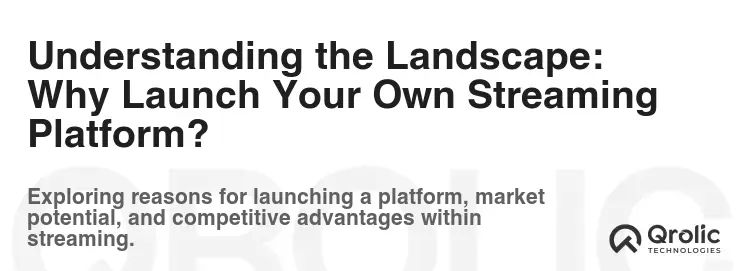
The entertainment industry is no longer confined to traditional television and movie theaters. We live in the age of streaming. Giants like Netflix, Hulu, and Disney+ have proven the viability and profitability of delivering content directly to consumers. But why should you consider launching your own streaming platform?
The Power of Niche Audiences
The existing streaming giants cater to a broad audience, which means there are niche interests that remain underserved. This presents a golden opportunity for you.
- Targeted Content: Focus on a specific genre (e.g., independent films, documentaries, educational videos), a particular interest group (e.g., cooking enthusiasts, fitness buffs, gamers), or a geographical region.
- Loyal Community: Building a platform around a niche fosters a strong sense of community among viewers who share a common passion. This leads to increased engagement and retention.
- Reduced Competition: Competing directly with Netflix is a daunting task. However, dominating a niche market is far more achievable.
Monetization Opportunities Beyond Subscriptions
While subscription fees are a common revenue model, streaming platforms offer diverse monetization options.
- Advertising: Integrate pre-roll, mid-roll, or banner ads into your content.
- Transactional Video on Demand (TVOD): Allow users to rent or purchase individual videos.
- Freemium Model: Offer a basic level of access for free, with premium content and features available through paid subscriptions.
- Merchandise: Sell related merchandise through your platform (e.g., t-shirts, posters, books).
- Affiliate Marketing: Promote relevant products or services and earn a commission on sales.
Direct Control Over Your Content and Brand
Launching your own platform gives you complete control over your content library, branding, and user experience.
- Curated Content: Select content that aligns with your vision and values.
- Brand Identity: Build a unique brand that resonates with your target audience.
- User Experience: Design a platform that is intuitive, engaging, and tailored to your viewers’ needs.
- Data Insights: Gain valuable insights into your audience’s viewing habits and preferences, allowing you to optimize your content strategy and marketing efforts.
Building a Streaming Platform vs. Using Existing Services
While platforms like YouTube and Vimeo offer video hosting and streaming capabilities, they often lack the control and branding opportunities you need to build a successful business. A dedicated streaming platform provides:
- Full Customization: Tailor the platform’s design, functionality, and branding to your specific requirements.
- Direct Relationship with Your Audience: Build a direct relationship with your viewers, without intermediaries.
- Advanced Monetization Options: Implement diverse monetization strategies beyond advertising.
- Data Ownership: Own your audience data and use it to improve your platform and content.
Planning Your Streaming Platform: Laying the Foundation for Success
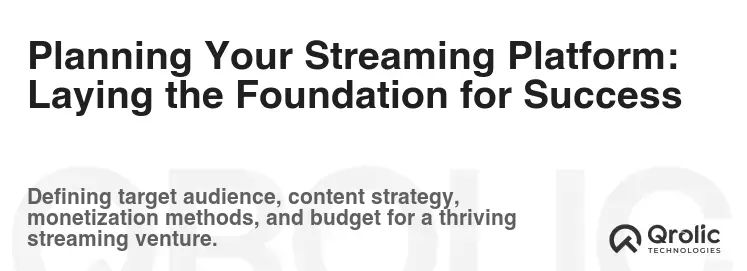
Before diving into the technical aspects, it’s crucial to develop a comprehensive plan that outlines your goals, target audience, and content strategy.
Defining Your Target Audience
Understanding your target audience is paramount.
- Demographics: Age, gender, location, income, education level.
- Interests: What are their passions? What kind of content do they enjoy?
- Pain Points: What problems are they trying to solve? How can your platform help?
- Viewing Habits: How do they consume content? What devices do they use?
Create detailed user personas that represent your ideal viewers. This will help you make informed decisions about content creation, platform design, and marketing strategies.
Developing a Content Strategy
Your content is the lifeblood of your streaming platform.
- Content Pillars: Identify the core themes or topics that will form the foundation of your content library.
- Content Formats: Determine the types of content you will offer (e.g., movies, documentaries, TV shows, short videos, live streams).
- Content Acquisition: How will you acquire content? Will you create it yourself, license it from others, or a combination of both?
- Content Calendar: Develop a content calendar to ensure a steady stream of fresh and engaging content.
- Content Quality: Prioritize high-quality content that is relevant, engaging, and visually appealing.
Choosing a Monetization Model
Select a monetization model that aligns with your content, target audience, and business goals.
- Subscription (SVOD): Users pay a recurring fee for access to your content library.
- Transactional (TVOD): Users pay for individual videos or events.
- Advertising (AVOD): Users access content for free, with ads integrated into the experience.
- Hybrid Models: Combine different monetization strategies to maximize revenue.
Consider factors such as content cost, audience willingness to pay, and advertising rates when making your decision.
Legal Considerations: Rights, Licenses, and Compliance
Streaming copyrighted content without the proper licenses is illegal and can result in hefty fines and legal action.
- Copyright Law: Understand the basics of copyright law and how it applies to streaming content.
- Content Licensing: Obtain the necessary licenses to stream copyrighted content.
- Terms of Service: Create clear and comprehensive terms of service that outline the rules and regulations for using your platform.
- Privacy Policy: Develop a privacy policy that explains how you collect, use, and protect user data.
- Data Security: Implement security measures to protect user data from unauthorized access and cyber threats.
- Accessibility: Ensure your platform is accessible to users with disabilities, complying with accessibility standards like WCAG (Web Content Accessibility Guidelines). This is not just a legal requirement in many regions, but also expands your potential audience.
Technical Foundations: Building Your Streaming Platform
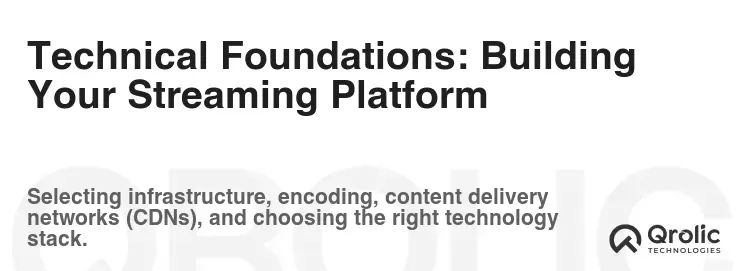
Now, let’s delve into the technical aspects of creating your streaming platform. You have two primary options: building from scratch or using a platform-as-a-service (PaaS) solution.
Option 1: Building from Scratch
This approach gives you the most control over every aspect of your platform but requires significant technical expertise and resources.
- Pros:
- Complete Customization
- Ownership of Code and Infrastructure
- Potentially Lower Long-Term Costs (if you have the in-house expertise)
- Cons:
- High Initial Investment
- Significant Development Time
- Requires Specialized Technical Skills
- Ongoing Maintenance and Support
Key Technologies and Tools:
- Backend Development:
- Programming Languages: Python (with Django or Flask), Node.js (with Express.js), Java (with Spring)
- Databases: PostgreSQL, MySQL, MongoDB
- Cloud Hosting: AWS (Amazon Web Services), Google Cloud Platform (GCP), Microsoft Azure
- Frontend Development:
- Frameworks: React, Angular, Vue.js
- HTML, CSS, JavaScript
- Video Streaming Technologies:
- Video Encoding: H.264, H.265 (HEVC), VP9
- Adaptive Bitrate Streaming (ABS): HLS (HTTP Live Streaming), DASH (Dynamic Adaptive Streaming over HTTP)
- Content Delivery Network (CDN): Akamai, Cloudflare, Fastly
- Security:
- HTTPS: Encrypt all communication between the client and the server.
- Authentication and Authorization: Implement secure user authentication and authorization mechanisms.
- Digital Rights Management (DRM): Protect your content from piracy.
Steps to Building from Scratch:
- Design the Architecture: Plan the overall architecture of your platform, including the backend, frontend, database, and video streaming infrastructure.
- Develop the Backend: Build the server-side logic for user management, content management, billing, and other features.
- Develop the Frontend: Create the user interface for your platform, ensuring it is responsive, user-friendly, and visually appealing.
- Integrate Video Streaming Technologies: Implement video encoding, adaptive bitrate streaming, and CDN integration.
- Implement Security Measures: Protect your platform and content from unauthorized access and piracy.
- Test and Deploy: Thoroughly test your platform before launching it to the public.
Option 2: Using a Platform-as-a-Service (PaaS) Solution
This approach provides a pre-built platform with all the necessary features and infrastructure, allowing you to focus on content and marketing.
- Pros:
- Faster Time to Market
- Lower Initial Investment
- Reduced Technical Complexity
- Scalable Infrastructure
- Cons:
- Limited Customization
- Reliance on a Third-Party Vendor
- Potentially Higher Long-Term Costs (depending on usage)
- Less Control over the Underlying Infrastructure
Popular Streaming Platform PaaS Solutions:
- Vimeo OTT: A comprehensive platform for building and managing subscription-based video businesses.
- Brightcove: A leading provider of video streaming and monetization solutions for enterprises.
- IBM Watson Media: A powerful platform for live and on-demand video streaming.
- Uscreen: A platform designed for creators to sell and stream videos online.
- Dacast: A streaming solution that offers a variety of features at different price points.
- Muvi: End-to-end video and audio streaming platform to launch own branded OTT platform.
Steps to Using a PaaS Solution:
- Choose a Platform: Research and select a PaaS solution that meets your specific needs and budget.
- Customize Your Platform: Customize the platform’s design and branding to match your brand identity.
- Upload Your Content: Upload your video content to the platform.
- Configure Monetization Settings: Configure your monetization model (e.g., subscription, TVOD, advertising).
- Launch Your Platform: Launch your platform to the public.
Choosing the Right Option: A Decision Matrix
Consider these factors when deciding whether to build from scratch or use a PaaS solution:
| Factor | Building from Scratch | Using a PaaS Solution |
|---|---|---|
| Budget | High | Low to Medium |
| Time to Market | Long | Short |
| Technical Skills | High | Low |
| Customization | High | Limited |
| Control | High | Low |
| Scalability | Requires Careful Planning | Built-in |
Video Platform Design: Creating an Engaging User Experience

The design of your video platform is crucial for attracting and retaining viewers. A well-designed platform is intuitive, visually appealing, and easy to use. Focusing on responsive video platform design is crucial for reaching a wider audience across various devices.
Key Design Principles
- User-Centered Design: Design your platform with your target audience in mind.
- Intuitive Navigation: Make it easy for users to find the content they are looking for.
- Visually Appealing Design: Create a visually appealing design that is consistent with your brand identity.
- Responsive Design: Ensure your platform is responsive and works seamlessly on all devices (desktops, tablets, smartphones).
- Fast Loading Times: Optimize your platform for fast loading times to prevent users from abandoning your site.
- Accessibility: Design your platform to be accessible to users with disabilities.
Essential Design Elements
- Homepage:
- Featured Content: Showcase your best and newest content.
- Search Bar: Allow users to easily search for specific videos.
- Category Navigation: Organize your content into categories for easy browsing.
- User Login/Registration: Provide a seamless login and registration process.
- Video Player:
- High-Quality Video Playback: Ensure high-quality video playback with minimal buffering.
- Playback Controls: Provide intuitive playback controls (play, pause, rewind, fast forward, volume, full screen).
- Subtitles/Closed Captions: Offer subtitles and closed captions for accessibility and multilingual viewers.
- Adaptive Bitrate Streaming: Implement adaptive bitrate streaming to optimize video quality based on the user’s internet connection.
- Content Pages:
- Video Description: Provide detailed descriptions of your videos.
- Related Videos: Suggest related videos to keep users engaged.
- Comments Section: Allow users to comment on videos.
- Social Sharing Buttons: Make it easy for users to share videos on social media.
- User Account:
- Profile Management: Allow users to manage their profile information.
- Subscription Management: Allow users to manage their subscriptions.
- Watch History: Track users’ watch history to provide personalized recommendations.
- Payment Information: Store users’ payment information securely.
Best Practices for Video Platform Design
- Use a Consistent Design Language: Maintain a consistent design language throughout your platform.
- Optimize for Mobile: Ensure your platform is optimized for mobile devices.
- Use High-Quality Visuals: Use high-quality images and videos to enhance the user experience.
- Test Your Design: Test your design with real users to identify and fix any usability issues.
- Gather Feedback: Continuously gather feedback from your users and use it to improve your platform.
Content Management and Delivery: Optimizing the Streaming Experience
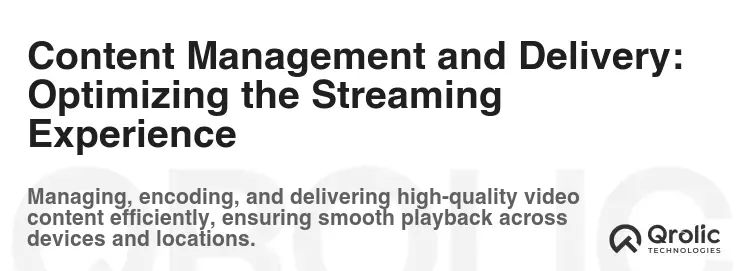
Efficient content management and delivery are crucial for providing a seamless streaming experience.
Video Encoding and Transcoding
- Encoding: Converting video files into a format suitable for streaming (e.g., H.264, H.265).
- Transcoding: Converting video files into multiple resolutions and bitrates for adaptive bitrate streaming.
Best Practices:
- Use a Professional Video Encoder: Use a professional video encoder to ensure high-quality video output.
- Encode for Multiple Resolutions and Bitrates: Encode your videos for multiple resolutions and bitrates to accommodate different internet connection speeds and devices.
- Optimize for Adaptive Bitrate Streaming: Optimize your videos for adaptive bitrate streaming to provide a seamless viewing experience.
Content Delivery Network (CDN)
A CDN is a network of servers located around the world that cache and deliver content to users based on their location.
Benefits of Using a CDN:
- Faster Loading Times: CDNs reduce latency and improve loading times.
- Improved Scalability: CDNs can handle large volumes of traffic.
- Increased Reliability: CDNs provide redundancy and ensure that your content is always available.
Popular CDN Providers:
- Akamai: A leading CDN provider with a global network of servers.
- Cloudflare: A popular CDN provider that offers a free plan.
- Fastly: A CDN provider that focuses on performance and security.
- Amazon CloudFront: Amazon’s CDN service, integrated with AWS.
Metadata Management
Metadata is data about your video content, such as the title, description, tags, and categories.
Importance of Metadata:
- Improved Searchability: Metadata helps users find your content.
- Enhanced Discoverability: Metadata helps search engines and recommendation engines understand your content.
- Better Organization: Metadata helps you organize your content library.
Best Practices:
- Use Descriptive Titles and Descriptions: Use descriptive titles and descriptions that accurately reflect the content of your videos.
- Use Relevant Tags: Use relevant tags to help users find your content.
- Categorize Your Content: Categorize your content to make it easy to browse.
Marketing and Promotion: Getting the Word Out

Launching a streaming platform is only half the battle. You need to market and promote your platform to attract viewers.
Search Engine Optimization (SEO)
Optimize your platform for search engines to attract organic traffic.
- Keyword Research: Identify relevant keywords that your target audience is searching for. Use tools like Google Keyword Planner, Ahrefs, or SEMrush.
- On-Page Optimization: Optimize your website’s content, meta descriptions, and title tags with relevant keywords.
- Off-Page Optimization: Build backlinks from other websites to improve your website’s authority.
- Video SEO: Optimize your video titles, descriptions, and tags for YouTube and other video platforms.
Social Media Marketing
Use social media to connect with your target audience, build a community, and promote your content.
- Choose the Right Platforms: Focus on the social media platforms that your target audience uses most.
- Create Engaging Content: Create engaging content that is relevant to your audience.
- Run Contests and Giveaways: Run contests and giveaways to generate excitement and engagement.
- Use Social Media Advertising: Use social media advertising to reach a wider audience.
Email Marketing
Build an email list and use it to promote your content, announce new releases, and offer special deals.
- Offer a Lead Magnet: Offer a valuable lead magnet (e.g., a free trial, a free ebook) in exchange for email addresses.
- Segment Your Email List: Segment your email list based on user interests and demographics.
- Send Regular Emails: Send regular emails to keep your audience engaged.
- Personalize Your Emails: Personalize your emails to make them more relevant.
Paid Advertising
Use paid advertising to reach a wider audience and drive traffic to your platform.
- Google Ads: Use Google Ads to target users who are searching for relevant keywords.
- Social Media Ads: Use social media ads to target users based on their demographics, interests, and behaviors.
- Influencer Marketing: Partner with influencers to promote your platform to their followers.
Content Marketing
Create valuable and engaging content that attracts and retains viewers.
- Blog Posts: Write blog posts about topics related to your content.
- Articles: Publish articles on other websites and publications.
- Infographics: Create infographics that visually represent your data.
- Ebooks: Create ebooks that provide in-depth information about your content.
Analytics and Optimization: Measuring Success and Improving Performance

Tracking your platform’s performance is essential for identifying areas for improvement.
Key Metrics to Track
- Website Traffic: Track the number of visitors to your website.
- User Engagement: Track user engagement metrics such as time on site, bounce rate, and pages per visit.
- Subscription Rate: Track the number of users who subscribe to your platform.
- Churn Rate: Track the number of users who cancel their subscriptions.
- Customer Acquisition Cost (CAC): Track the cost of acquiring a new customer.
- Customer Lifetime Value (CLTV): Track the value of a customer over their lifetime.
Tools for Tracking Analytics
- Google Analytics: A free and powerful web analytics tool.
- Mixpanel: A product analytics tool that helps you understand user behavior.
- Amplitude: A product analytics tool that focuses on mobile analytics.
A/B Testing
Use A/B testing to experiment with different versions of your website, content, and marketing campaigns.
- Test Headlines: Test different headlines to see which ones generate the most clicks.
- Test Call-to-Actions: Test different call-to-actions to see which ones generate the most conversions.
- Test Landing Pages: Test different landing pages to see which ones generate the most leads.
Iterative Improvement
Continuously analyze your data and use it to improve your platform, content, and marketing strategies.
- Identify Areas for Improvement: Identify areas where your platform is underperforming.
- Develop Hypotheses: Develop hypotheses about how to improve your platform.
- Test Your Hypotheses: Test your hypotheses using A/B testing or other methods.
- Implement the Changes: Implement the changes that you have tested and validated.
Future Trends in Streaming: Staying Ahead of the Curve
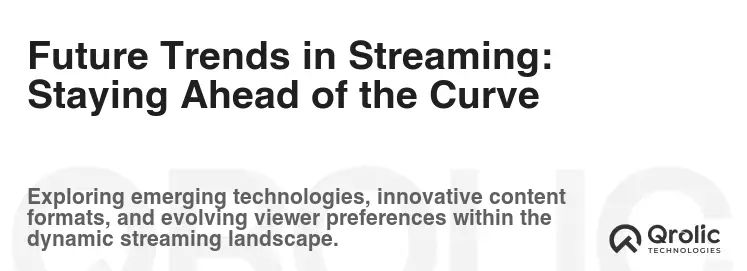
The streaming industry is constantly evolving. Here are some future trends to keep an eye on:
- Personalization: Expect more personalized content recommendations and user experiences. AI and machine learning will play a larger role.
- Interactive Streaming: Interactive elements, such as live polls, Q&A sessions, and watch parties, will become more common.
- Virtual Reality (VR) and Augmented Reality (AR): VR and AR technologies will offer immersive viewing experiences.
- Cloud Gaming: Cloud gaming services will allow users to stream games without the need for powerful hardware.
- Blockchain Technology: Blockchain can be used to improve content security, transparency, and monetization.
- Live Streaming Dominance: Live events, concerts, and interactive shows will continue to gain popularity, blurring the line between traditional broadcasting and online streaming.
Qrolic Technologies: Your Partner in Streaming Success
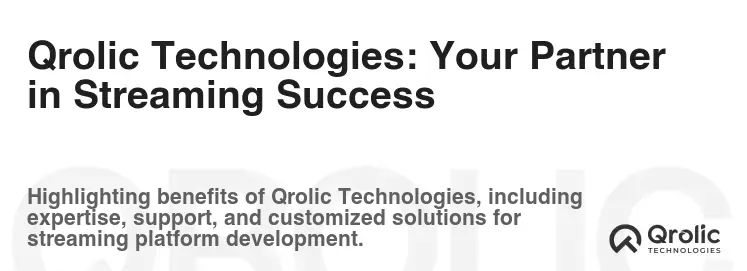
Creating a robust and scalable streaming platform requires expertise in various technologies. Qrolic Technologies (https://qrolic.com/) can be your trusted partner in building and managing your streaming platform.
- Custom Software Development: Qrolic Technologies offers custom software development services to build a platform tailored to your specific needs.
- Video Streaming Solutions: They can help you implement video encoding, adaptive bitrate streaming, and CDN integration.
- Cloud Infrastructure: They can provide cloud infrastructure and management services to ensure your platform is scalable and reliable.
- Mobile App Development: They can develop mobile apps for your platform to reach a wider audience.
- Consulting Services: Qrolic Technologies offers consulting services to help you plan and execute your streaming platform strategy.
- AI-Powered Solutions: Leveraging AI for personalized recommendations, content tagging, and enhanced user experience.
- Blockchain Integration: Integrating blockchain for secure content rights management and microtransactions.
By partnering with Qrolic Technologies, you can focus on content creation and marketing while they handle the technical complexities of building and managing your streaming platform.
Conclusion: Your Journey to Streaming Success Begins Now
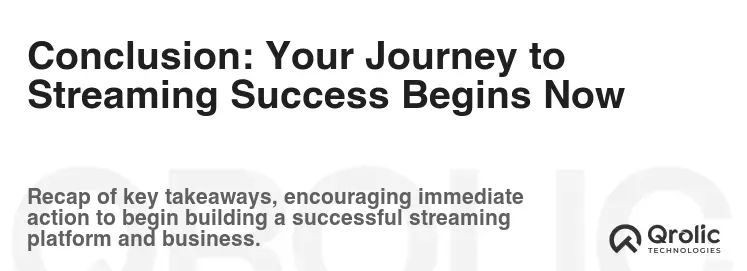
Creating a successful streaming platform requires careful planning, technical expertise, and a strong understanding of your target audience. By following the steps outlined in this comprehensive guide, you can lay the foundation for a thriving streaming business. Remember to prioritize high-quality content, an engaging user experience, and effective marketing strategies. And consider partnering with a trusted technology provider like Qrolic Technologies to accelerate your journey to streaming success. The future of entertainment is streaming, and now is the time to claim your share of the market.
